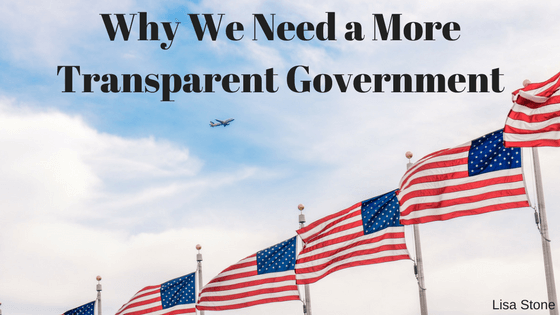Creating a more transparent government may sound like a difficult thing to accomplish and one would be right to think so. Taking a step back to look at the federal government and discerning how to make it more transparent will seem like a daunting step. There are certain steps and changes the government can make to provide that government transparency we deserve as taxpayers and citizens.
Data should be readily available to the public by being searchable, findable, and accessible. While citizens have the opportunity to do so utilizing the Freedom of Information Act (FOIA), some information is still left out of requests due to any number of statutes that allow that information to be redacted. Most times, the reason is cited as a matter of national security or the information pertains directly to a certain agency’s internal policy and procedures. All FOIA requests should be made into a central location that lets the public see, in real time, when those requests are made and how quickly the government and the specific agencies are responding to them.
To help with the request load, the government should maintain a level of redundancy throughout their system. This helps the data not be held in one location but rather allows for multiple locations to hold the information available to the public in events of disaster or if the data is under threat of damage. This built in redundancy would ensure that the government can rebuild the data for future utilization should any damage come to it at one location.
Spending data is a large concern for many taxpayers. We pay our taxes every year, but we never really get to see where that tax money is being spent. As citizens, we have every right to know how our government is spending the taxpayers dollars, who exactly is spending it and where exactly that money is being spent. The federal government requires us to pay those taxes each year but never offers any explanation as to where the money we pay is truly going. As much as possible, the government should be letting taxpayers know how they decide to spend the money where it is being spent.
There should be no more closed door meetings when it comes the federal government. Unless the matter at hand is truly of national security, all meetings should be published in a centralized location as soon as they are scheduled. This would offer a chance for the public to place more trust in the government if they were able to see who exactly is influencing the government and how the decisions are made during these meetings.
An additional layer of transparency would be to provide the public with the ability to directly speak with the President. In 2009, then-President Obama opened up a public forum called “Open for Questions” where participants and members of the public could ask the President questions pertaining to the economy and rate questions that would be used for further sessions. It seems that the current administration could take a page out of President Obama’s book and employ such a strategy. It may serve them well and change a dismal public view of the administration to offer that chance to the citizens to ask the President questions pertaining to a hard-hitting topic.
If we’re supposed to continue paying taxes and abiding by the rules of our government, then that same government should be required to become more transparent. Why should we be expected to blindly follow the path of a government that’s not telling us where they’re leading us?

